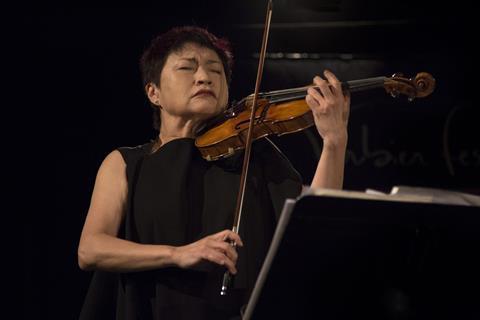Our August 2021 issue features Juilliard professor Lewis Kaplan examining Bach’s Solo Partitas. Read an extract from our October 2016 Session Report issue featuring violinist Kyung Wha Chung

This is an extract taken from our October 2016 Session Report. Click here to read the full article
I began playing unaccompanied Bach when I was 13, while studying at the Juilliard School under Ivan Galamian. The first thing he gave me was the Prelude from the E major Partita; then the G minor Sonata, and I didn’t know what I was doing – the Fugue was beyond me. By the time I was 17 I could play all six of the Sonatas and Partitas. The last one I learnt was the C major Sonata, which was a big challenge. I love the opening Adagio, but to sustain the bass-line and then create the melodic line take quite a bit of technical training.
My new Warner Classics set, due to be released this month, could be compared with my 1974 Decca recording of the Partita in D minor and the Sonata in C major, which was made in line with what I was taught by Galamian. Players such as Heifetz, Oistrakh and Szigeti all played Bach with full sound, but nowadays there is so much questioning about what the composer intended. In those days we didn’t bother with urtext – all editions were fingered and phrased. My approach on the Warner Classics recording is more connected to Baroque style, with lighter articulation, even though I come from the Romantic tradition.
When I was a student in the 1960s there was much more freedom of expression, and fluidity in phrasing, and in those days I didn’t want to make ‘ugly’ sounds. Younger players today have the technique to achieve whatever they desire – they have all the historical knowledge and the past recordings to refer to. But the challenge for these players is to know who they are – to recognise their voice. They must find their own sound within each composer’s idiom. You can’t relive a composer’s difficult life (Bach had many troubles of his own), but I myself have lived through difficult times, in a country scarred by war and death and poverty. All Korean people yearn for peace and freedom, a yearning that strongly affects me as an artist.
My faith and my music making are completely connected, as they were in Bach, who served the church with his music. He was such a pure and passionate man, and we can hear this mostly in his organ music, his Masses and his Passions, but it’s clear that he loved the violin. I hear suffering in all of the Sonatas and Partitas, not just in the Chaconne (from the Partita in D minor). The cycle begins in G minor, with the tonic chord on the lowest string of the violin. I was taught that this is a whole world opening up, and my personal approach to it is inspired by the biblical book of Genesis and the creation of the world.
Read: 6 thoughts on performance and interpretation from Kyung Wha Chung











































No comments yet